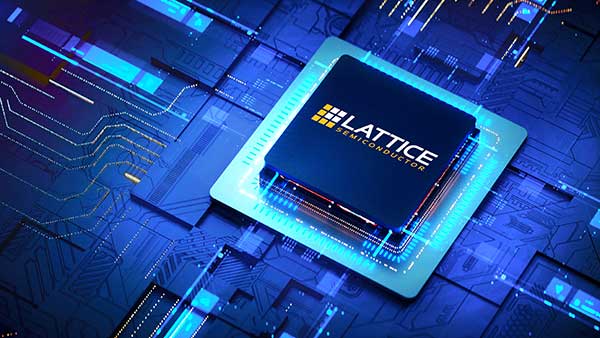As we transition to Industry 5.0, energy efficiency and sustainability are requirements. Here’s why FPGAs are the tool to drive success.
Over the past decade, a plethora of innovative solutions – from artificial intelligence (AI) and machine learning (ML) to cloud computing, the Internet of Things (IoT) and 3D printing – have transformed industrial technology sectors like healthcare, supply chain, production in manufacturing, and cloud manufacturing.
All of these advancements are part of Industry 4.0 – the fourth industrial revolution that is responsible for digitization, automation, and connected computing intelligence, particularly in the manufacturing industry. While innovation blossomed throughout Industry 4.0, we also saw a greater need for security to protect information, intellectual property, products and more.
Particularly due to the unique and highly specialized nature of several Industry 4.0 advancements, there has been a demand for computing solutions that can be easily customized for the specific roles they play. Field Programmable Gate Arrays (FPGAs), which are a type of semiconductor chip that can be programmed and reprogrammed to perform almost any type of computing function, have proven to be particularly well-suited for these demanding Industry 4.0 devices and applications.
The advancements we’ve seen in Industry 4.0 have shaped today’s society by driving increased productivity and efficiency in the manufacturing process, but we’re beginning to see a shift towards the next wave of industrial revolution with a mindful approach around energy efficiency and sustainability – Industry 5.0.

Industry 5.0 blends the technological innovations and capabilities of Industry 4.0 with human experience and perspective to create more reliable, efficient, and sustainable operations in manufacturing. Embracing both digital and green transitions will enable the overall manufacturing industry to move beyond efficiency and productivity and will reinforce the role and the contribution of manufacturing to overall society.
According to the European Union, this shift to Industry 5.0 “places the wellbeing of the worker at the center of the production process and uses new technologies to provide prosperity beyond jobs and growth while respecting the production limits of the planet. It complements the existing “Industry 4.0” approach by specifically putting research and innovation at the service of the transition to a sustainable, human-centric and resilient European industry.”
Industries can play an active role in providing solutions to societal challenges including the preservation of resources, climate change, and social stability. The Industry of the Future approach brings benefits for industry, workers, and society alike by empowering and addressing the evolving skills and training needs of workers. This shift improves industry competition, helps attract the best talents, and helps the planet with more efficient use of natural resources—utilizing circular production models and supporting technologies. Revising existing value chains and energy consumption practices can also make industries more resilient against external variables such as COVID-19.
The advancement of artificial intelligence and cognitive computing technologies is taking the manufacturing world to a high speed and increasing business efficiency. At full working capacity, Industry 5.0 will allow for better automation of the manufacturing process, creating an environment where collaboration, data, and security are more important than ever before.
Smart and connected machines, machine learning, and industrial automation can forecast the efficiency of the production based on the existing activity, increasing business efficiency where the processes are to be adjusted based on the parameters to avoid losses. This will not only require proper interaction with the skilled workers and the machines on the floor, but also a proper communication between machine to machine. This emphasizes the need for advanced technology that adheres to industry standards including OPC Unified Architecture (OPC UA) and Time Sensitive Networking (TSN).
A machine-to-machine communication protocol, OPC UA is a platform-independent service-oriented architecture that integrates OPC specifications into frameworks, simplifies connectivity to streamline integration, and automates systems and software applications, all with security at its foundation. With OPC UA, you can easily connect remote devices in the cloud or at the Edge, enable diagnostics, monitoring, reporting, and more. It helps people make better decisions by giving them more information about what’s happening with the machines they use every day.
Even further, combined with the outstanding real-time capabilities of TSN, OPC UA is a key solution to bringing the manufacturing industry up to speed with Industry 5.0. Specifically, when you overlay OPC UA with TSN at the sensor and actuator level, you’re able to achieve continuous insight and data flow without distributing operations or security.
While OPC UA is typically only supported on certain devices and can only share a fraction of data available, there is a movement towards creating an open-source stack for OPC UA over TSN, specifically for Amazon’s FreeRTOS, to simplify and accelerate the development of efficient, smart, and secure field devices.
In order to bolster OPC UA and TSN for an Industry 5.0 future, highly specialized technology like FPGAs presents a unique opportunity for OPC UA and TSN.
Additionally, FPGAs are ideal for edge processing and AI applications due to their inherent flexibility and adaptability. Since AI can impact economic and societal benefits across industries and social activities, government bodies are also focusing on AI implementation on their Industry 5.0 initiatives. AI can support socially and environmentally beneficial outcomes and provide key competitive advantages to companies and the overall economy by improving prediction, optimizing operations and resource allocation, and personalizing service delivery.
One of the largest challenges of Industry 5.0 involves energy management, due to the increased data streams, sensors, and monitoring required to allow people to work alongside machinery. Since FPGAs boost collaboration, security, and work seamlessly alongside OPC UA and TSN, there are a few ways that FPGAs can help design highly capable and innovative systems that we will see in the Industry 5.0 revolution.
First, FPGAs provide device makers with the ability to create a specifically designed engine or co-processor and have the added benefit of being reprogrammable or updated after the system has been deployed. For manufacturing in particular, this capability can be incredibly important during the development process for a specific machine as product requirements often change. In addition, industrial equipment often has product lifetimes measured in decades, not just years, so the ability to update and upgrade existing machines to support new standards or meet evolving technical demands can prove to be invaluable.
Second, due to the increased interconnectedness of Industry 5.0, FPGAs are a key tool that help protect information, intellectual property, products, and more. FPGAs have the power to monitor traffic in real time, look for inaccurate transactions or rogue situations, and can carry out these actions on multiple channels at the same time. FPGAs also enable developers to check authenticity and make sure everything is running according to plan and, if not, provide the ability to go into recovery mode and make sure the part is working properly.
Further, FPGAs allow developers to update at fundamental hardware levels in a way that microcontrollers cannot. These updatable adjustments to key hardware-level Root of Trust (RoT) feature sets help ensure that, as threats and standards evolve, fielded systems can protect, detect, and recover networks in real-time with latest security algorithms — keeping sensitive data secure amidst growing firmware vulnerabilities and expanding attack surfaces. Ultimately, secure FPGAs will help mitigate security risks without burning through people or resources—supporting an Industry 5.0 environment.
Lastly, FPGAs can enable intelligent automation by integrating AI and ML algorithms into industrial control systems. By allowing manufacturing processes to be handled through automation, human workers are able to focus more of their time on delivering improved, bespoke services and products. This can help increase productivity, reduce downtime, and improve quality control, all without sacrificing power and size.
As one of the most flexible and secure tools on the market, FPGAs can help fuel the shift to Industry 5.0. Particularly their inherent flexibility and adaptability for AI applications and their ability to boost collaboration and security and comply with OPC UA and TSN can help manufacturers accomplish more in a shorter time frame, all while ushering in the Industry 5.0 future.

About the Author:
Karl Wachswender is a Principal System Architect, Industrial at Lattice Semiconductor. In this worldwide role, he leads the development and adoption of Industrial FPGA solutions, including defining requirements for next generation FPGAs, to meet the needs of Lattice’s strong and growing network of Industrial customers. Karl also works closely with Lattice channel and ecosystem partners to help our customers get the most out of their Lattice-based designs.
Karl brings more than 30 years of Industrial segment experience to this role, including over 20 years in Industrial FPGAs. Before joining Lattice in October 2021, he was a Principal System Architect at Intel (formerly Altera Corp.), focused on Industrial solutions. He also previously held technical roles at multiple technology distribution companies.
Karl holds Engineering degrees from Technische Universitat Vienna and Hohere Technische Bundeslehranstalt Vienna 22.
Scott Ellyson, CEO of East West Manufacturing, brings decades of global manufacturing and supply chain leadership to the conversation. In this episode, he shares practical insights on scaling operations, navigating complexity, and building resilient manufacturing networks in an increasingly connected world.